Discover American Catholic History
American Catholic History

American Catholic History
Author: Noelle & Tom Crowe
Subscribed: 445Played: 18,728Subscribe
Share
© Copyright 2024 All rights reserved.
Description
Telling the stories of Catholics on these American shores from 1513 to today. We Catholics have such an incredible history in what are now the 50 states of the United States of America, and we hardly know it. From the canonized saints through the hundred-plus blesseds, venerables, and servants of God, to the hundreds more whose lives were sho-through with love of God, our country is covered from sea to shining sea with holy sites, historic structures, and the graves of great men and women of faith. We tell the stories that make them human, and so inspiring.
99 Episodes
Reverse
Mother Benedict Duss hid from the Nazis in her French Benedictine monastery during World War II. After General Patton's Third Army liberated her abbey she pledged to return to the United States to establish a Benedictine monastery to pray for and bless her homeland. Through the assistance of two future popes — both of whom would eventually be canonized — and a number of other providential happenstances, the Abbey of Regina Laudis was finally established in Bethlehem, Connecticut. The story of the founding eventually became the basis for the acclaimed movie Come To The Stable, which was nominated for eight Oscars, including for the screenplay written by Clare Booth Luce. Regina Laudis has been the home of Mother Dolores Hart since she left a budding Hollywood acting career in the 1960s, and it was the place where the actress Patricia Neal found solace and healing after her tumultuous life.
Father Aloysius Schmitt was a Navy Chaplain assigned to the USS Oklahoma at the outset of World War II. He had just finished the 7 a.m. Mass on the Second Sunday of Advent when the first torpedoes from the surprise Japanese attack struck the ship. He aided men to escape, at the cost of his own life during the attack on Pearl Harbor. He was the first chaplain to die in World War II.
Venerable Henriette Delille overcame great opposition to establish the second religious community for black women in the United States. She was an octroon born in New Orleans in 1813. Her mother was a kept woman within the plaçage system. After Henriette learned the truth about marriage she became implacably opposed to the plaçage system, and she rejected the trajectory of her life. In her 20s she started the second religious community for black women, but it took years for the authorities to approve her religious order. Since its founding in the 1840s the community has opened the first Catholic nursing home for the elderly in the United States, as well as one of the oldest Black Catholic high schools in the USA. Henriette Delille died in 1862. Her cause for canonization opened in 1988, and she was declared venerable in 2010.
"Pope Night" was the American version of the British "Guy Fawkes Night," the annual commemoration of the Gunpowder Plot. The night of mischief and mayhem and anti-Catholic demonstrations came over with sailors and grew to include demonstrations up and down the New England coast. It was ended by George Washington, who had an affinity for Catholics — and who needed Catholic support in the war against Great Britain
In the late 1700s, Adam Livingston, who was Lutheran, moved with his family to a farm near Smithfield, Virginia. After a stranger, who turned out to be Catholic, died in his home, manifestations of a demonic infestation of their home began to disturb his family. The sound of invisible horses galloping loudly, crockery flying off shelves, a clipping sound accompanied by articles of clothing being damaged, and other disturbing occurrences. The clipping is what gave the area the name "Wizard Clip." The manifestations continued until two Catholic priests, including Father Demetrius "Prince" Gallitzin, intervened to exorcise the demons. Livingston's family became Catholic as a result. Following their conversion, a consoling heavenly voice instructed the Livingston family in the faith, led them in prayer, and inspired Livingston to do good things for others in need. When the Livingstons moved back to Pennsylvania in 1802, Adam Livingston donated 34 acres to the Catholic Church, and that land is, since 1978, the Priestfield retreat center for priests in modern day Middleway, West Virginia.
John Barry was born in Ireland in the late 1740s to Catholic peasant farmers. Being Catholic they had no rights, and by the time John was ten they had been evicted from their land and moved to a coastal town. John became a sailor on his uncle's fishing vessel and by 15 had risen well. That year he moved to Philadelphia, the most important port city in the British colonies in America. By 21 he was a ships captain making runs to the Caribbean regularly. He rose in prominence as a captain and a man of great character and generosity in Philadelphia society. When the Revolutionary War broke out in 1775 he sold his ship, the Black Prince, to the Continental Congress, and offered his services as a sea captain. On board his new command, the Lexington, he won the first naval engagement of the War. He spent time on shore during the War, taking part in the battles of Trenton and Princeton, among other actions. When he returned to sea, after refusing to take a bribe from the British to switch allegiance, he commanded two other ships and won other significant battles, including the final engagement of the War. After Independence was won he went back to merchant shipping until President George Washington tapped him to lead the organization of the new permanent US Navy. He oversaw construction of the first naval vessels and took command of the first ship, the United States. Washington nominated him as the first officer, and first flag officer, of the new U.S. Navy, effective in 1794. He died in 1803 of asthma. There are at least three statues commemorating Barry — one in Washington, DC, one in Philadelphia, and one in his native Wexford, Ireland. For his efforts as a sea captain and establishing the US Navy, John Barry is considered the Father of the US Navy.
Dubbed "The Cathedral of the Plains" by William Jennings Bryan, the Basilica of St. Fidelis of Sigmaringen was completed in 1911. It was the largest and tallest church west of the Mississippi River at the time. It was built by the community of Volga Germans who had moved en masse to Victoria, Kansas in the last few decades of the 19th century and in the first decade of the 20th. The community grew quickly through immigration after the Tsar of Russia had rolled back many of the privileges and protections that they had enjoyed in Russia for nearly a century. The Basilica was built in just three years through the hard work and sacrifice of the families of the community. The effort was led by the Capuchin friar who was their pastor, Fr. Jerome Mueller, OFM Cap. He levied a duty of $45, six cartloads of stone, and four cartloads of sand on every male 12 years old and older. Many families took out loans to afford this duty, but they took on this debt willingly to have their church, and they contributed their own time and industry to build it. The title "Cathedral of the Plains" was given by Bryan in 1912 as he arrived in Victoria by train, while stumping for Woodrow Wilson's presidential election campaign. The church is easily visible from Interstate 70, and is visited frequently by people who are drawn to it due to its size, beauty, and splendor. It was named a Basilica in 2014.
Sister Blandina Segale had a second chapter to her life. After spending 20 years bringing civility and the light of Christ to the Wild West, Sister Blandina and her biological sister, Sister Justina, worked hard for immigrants and those in need in Cincinnati, Ohio. They began their work in 1896 and organized the Santa Maria Institute in 1897 to provide catechesis, social services, and homes for those in need. They worked initially among the immigrant Italian population, but their scope expanded as more and more people in need flooded into Cincinnati in the first quarter of the 20th century. They fought against bigotry, religious persecution and opposition, and sometimes an adverse legal system. But their efforts became one of the largest and most important social services organizations in Ohio, Santa Maria Services.
Vince Lombardi, legendary coach of the NFL's Green Bay Packers, was arguably the greatest football coach of all time. What made him a great coach was his ability to motivate his players, and get their best out of them. His coaching philosophy came largely from his Catholic education, and sounded a lot like how Catholics talk about virtue. As a coach he never had a losing season, and took the Green Bay Packers from a decade of futility to a decade of success, including winning the first two Super Bowls. But the sudden onset of cancer took his life after just one season of success with the Washington Redskins.
Sister Blandina Segale was a spitfire of a pint-sized Italian nun who faced down lynch mobs, tamed outlaws, outwitted juvenile troublemakers, and built or rebuilt schools, orphanages, hospitals and convents, often with her own hands and the those of anyone she could cajole or convince to help. Whew! She was originally from Italy, but after her family immigrated when she was 5, she became a Sister of Charity at 16. At 22, in 1872, she was sent to the frontier mining town of Trinidad, Colorado. She spent 20 years out west, and her impact was tremendous. But this episode is only part of her amazing story. After she was recalled to Cincinnati in 1892 she spent another nearly five decades working equally hard for women and children in that town. But that will be a story for another day.
Charlene Richard was an ordinary girl in south central Louisiana. She was a typical cajun Catholic girl, good at sports, good at her studies, a devout Catholic, and known to get into a little trouble here and there, just like every other kid her age. But when she was twelve everything changed when she was diagnosed with leukemia, and died just 13 days later. How she suffered for others, and how she accepted her coming death, inspired by St. Therese of Lisieux, made all the difference for “the Little Cajun Saint.”
"Stagecoach" Mary Fields was a hard-drinking, gun-toting, street-brawling black woman in the Montana frontier. She also was a kind-hearted guardian to the children of the Montana frontier, including native children, and she was a dear friend to the Ursuline nuns who had set up a mission near Cascade, Montana. In spite of her hard work, dedication to those in need, and generosity, she was treated poorly by those in positions of power. She spent eight years as a mail carrier running a Star Route in Montana. She was good at it, but some were upset by how good she was at it and gave her the nickname "Stagecoach Mary" as a way to denigrate her service. After leaving the Star Route she took on other jobs to make ends meet. While some resented her abilities, most loved her and appreciated her generosity and hard work. When she died in 1814 her funeral was one of the largest that Cascade, Montana had ever seen.
Shrines dedicated in honor of St. Anne are among the oldest Catholic establishments in the U.S. St Anne de Detroit, for instance, is the second-oldest parish in the United States, while the shrine on Isle la Motte, Vermont, was part of a French fort protecting the southern approaches to Montreal. Some shrines have dramatic stories, like the National Shrine of St. Anne in Scranton, Pennsylvania which nearly collapsed due to mining activity in the hill beneath it. Most have a relic of St. Anne, the grandmother of Jesus. The Shrine of St. Anne in Fall River, Massachusetts was built to rival the great shrine of St. Anne de Beaupre in Quebec, but demographic changes brought that awe-inspiring structure nearly to the point of demolition. These shrines often arose where French and French Canadians settled, as the French have historically had a deep devotion to the mother of Mary and grandmother of Jesus.
Image credits: St. Anne de Detroit, creative commons license, Polonia90; St. Anne's Church and Parish Complex, Fall River, Massachusetts, creative commons license, Kenneth C. Zirkel
Stanley Rother was born in Okarchee, Oklahoma the oldest of four children to a family of Catholic German farmers. He grew up learning the ways of farming, playing sports, and serving Mass. He entered seminary but struggled with some theology classes and Latin. The seminary eventually sent him home saying he wasn't priest material. Fortunately his bishop and Mount St. Mary's Seminary in Emmitsburg, Maryland wanted to give him another chance. He graduated and was ordained a priest for Oklahoma City-Tulsa in 1963. In 1968 he requested to be a missionary in Santiago Atitlan, Guatemala where the Diocese had a mission. He went and learned both Spanish and the difficult Tzutujil language of the small community of native peasants among whom he served as a missionary. He poured himself into the work, eventually translating the Mass and even the New Testament into Tzutujil. He also worked to bring modern farming techniques to the community and taught math along with language and catechetical lessons. His efforts, however, made him a target of both the government and left-wing militant groups who were fighting a bloody civil war that lasted decades. A number of his parishioners were victims of the Civil War as they refused to cooperate with either side of the fight. Father Rother wrote that "the shepherd doesn't flee at the first sign of danger." Eventually he was found to be number 8 on a death list, so his bishop ordered him to return to Oklahoma. He spent a few months at his family farm, but eventually requested permission to return to Santiago Atitlan to be with his people for Easter. He returned in April 1981, but on July 28, 1981 he was gunned down in the rectory in the middle of the night. He was regarded as a martyr and a great man from immediately after his death. His body was returned to Oklahoma, but his heart was returned to Santiago Atitlan where it remains. His cause for canonization opened in 2010, and he was beatified in a large outdoor Mass in Oklahoma City in 2017. A large shrine dedicated to Blessed Stanley Rother opened in 2023 in Oklahoma City.
Cora Evans grew up a good Mormon, but had a crisis of faith during her wedding at the Mormon Temple in Salt Lake City. She and her husband left the Mormon faith, and eventually became Catholic. This led to hardships as they were shunned for their apostasy. They had to flee Utah for California where they lived the rest of their lives. Cora's conversion came about in part because she had been having visions of the Blessed Mother since she was very young, but it wasn't until she spoke with a Catholic priest when she was 30 that she realized who this "beautiful lady" who visited her was. Her mystical experience grew in intensity, and eventually included many visits by Jesus himself, whom she alwasy called "The Master." Jesus gave her the mission of spreading devotion to the "Mystical Humanity of Christ," and he charged her to write and document her experiences. She had never written much, and wasn't highly educated, but she was obedient and she wrote about what Christ revealed to her. Her experiences came to the attention of the Church in Los Angeles, and the archbishop had Jesuits and other priests visit her to test the authenticity of her visions. Her responses and understanding convinced the experts and the archbishop that her visions were genuine, but that they were private revelations, not to be publicized at least during her lifetime. Eventually her writings filled boxes and boxes worth of manuscripts about her experiences. Some have been published, including one published under the title Refugee from Heaven. Those who carry on her work still offer conferences and retreats to help people live a life according to the Mystical Humanity of Christ. In 2010 her cause for canonization was officially opened, giving her the title of Servant of God.
Franciscan Fr. Juan de Padilla accompanied Coronado on his 1541 mission into New Mexico to search for the legendary Seven Cities of Gold. Father Padilla was looking for souls to evangelize and save. After Coronado’s search was frustrated, Fr. de Padilla remained behind to evangelize natives among the Ouichita — or Wichita — in modern day Kansas. Details aren't clear as to how or precisely where, but for his efforts he was the first to shed his blood for Christ in the New World. Three different markers in modern day Kansas mark places where his martyrdom could have happened. All three are within 100 miles of the geographic centerpoint of the contiguous 48 states. His martyrdom happened about 100 years prior to the first of the North American Martyrs in New York.
Orestes Brownson was the first major American Catholic intellectual to gain an international reputation. His thinking on the significance of America, and the place of Catholics within American political life was new and unexpected. He believed, contra what many anti-Catholics in his day believed, that not only could Catholics be good Americans, but that Catholics could be the best Americans. He also had strong opinions on slavery. Brownson opposed slavery as a great evil, but he was not an abolitionist. He believed that those who held slaves had a moral obligation to treat them well, and to prepare them to be free men and women, but that simply freeing all slaves would bring about great harm to the slaves as well as society. But once the Civil War began, he became an abolitionist, believing that, since the South made the war about the right to own slaves, slavery must be ended as part of the North’s victory in the Civil War.
Orestes Brownson was a major intellectual of the 19th century, and a Catholic convert in his 41st year. Born in 1803 in Vermont, he was raised Christian, but in no particular Christian denomination or sect. He was largely self-taught, and had a strong sense that one must follow reason to arrive at truth, no matter where it was found. In his teens he began a struggle for religious truth that would start in Presbyterianism, then through Universalism, and Unitarian Transcendentalism, before he finally became Catholic, and remained so for the remaining three decades of his life. This is part one of a rare two-part treatment of a topic.
Noel Dubé, Noëlle’s grandfather, was a hero of World War II, landing on D-Day and playing a key role in the breakout from the beaches and the race through the hedgerows of Normandy. He also raised ten children with his wife Toni and started a local shrine to Our Lady which drew thousands of visitors annually from across the country. His devotion to Mary began at a young age when his mother died and he took Mary to be his mother.
John Wayne, the icon of American manliness and one of the most important film stars of all time, once called himself a "cardiac Catholic." He meant that he intended to become Catholic on his deathbed. Born Marion Morrison he was raised a Presbyterian, but all three of his wives were Catholic. We're not sure how that worked out, since none of them predeceased him, but we leave that to God's grace and the wisdom of the Church. However, the example of many Catholics in his life, particularly his first wife, had a deep impression on him. Despite serious problems with infidelity, John Wayne did manage to become Catholic and make his amends with God before his death.


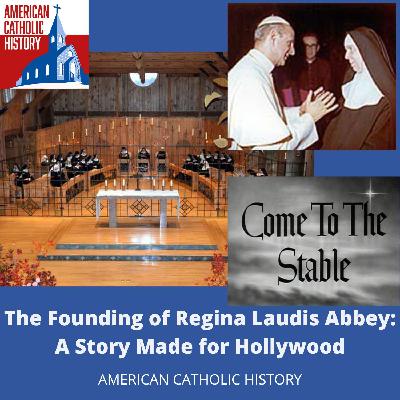
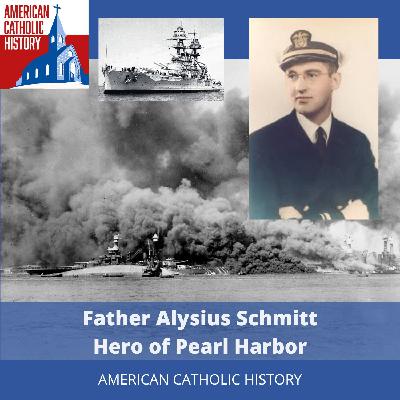
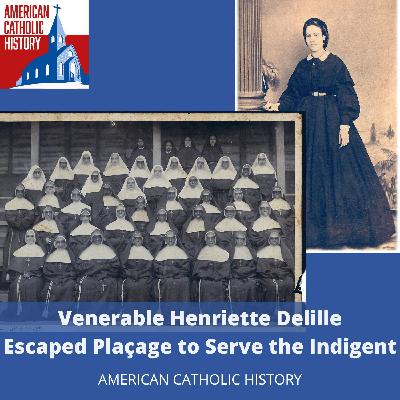
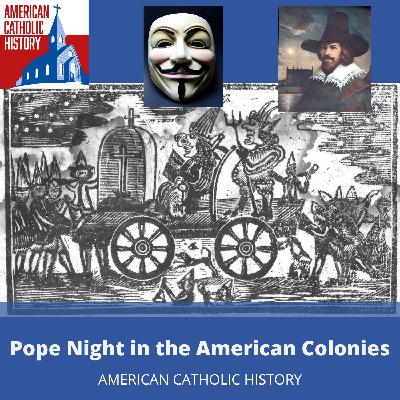

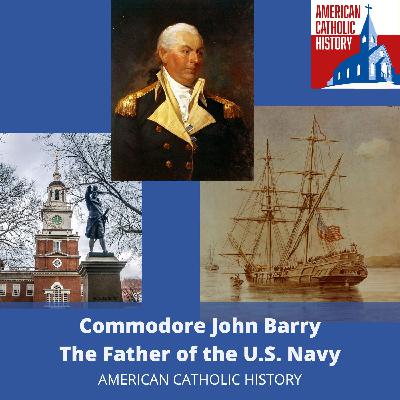

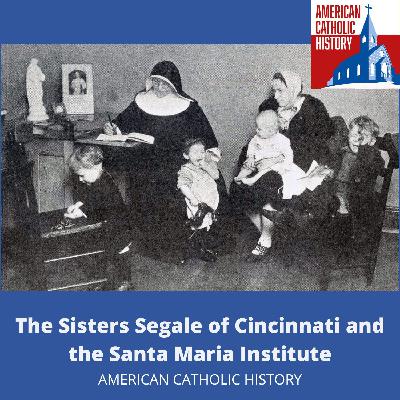

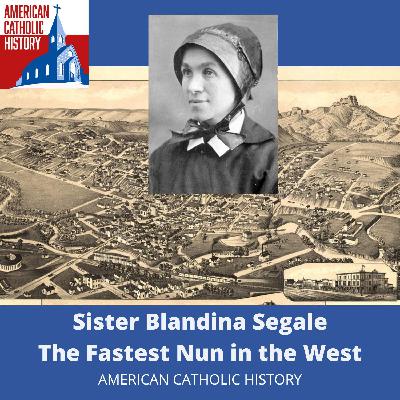

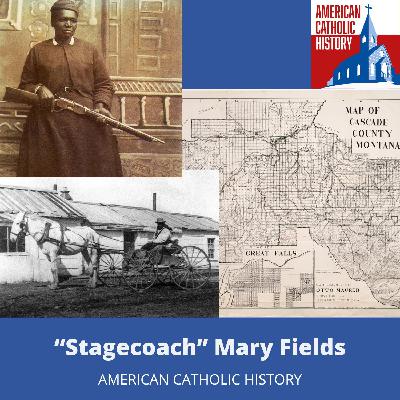

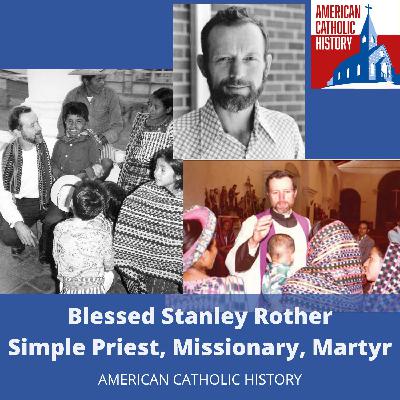

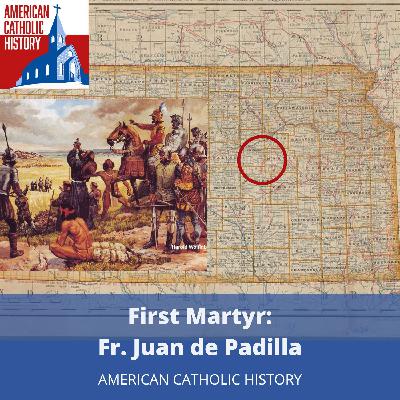
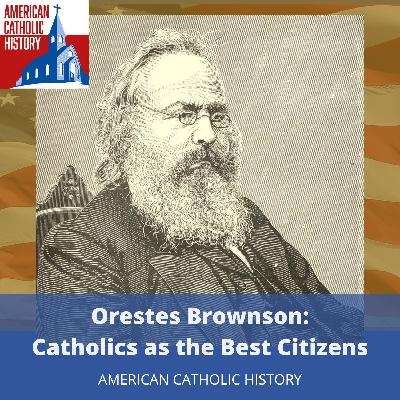






Are there any episodes about the churches history pertaining to the colonization of the America's? Or the sex abuse crisis/scandal? As a Catholic I just want to make sure that we aren't white washing our own history and only talking about bright points. When talking about history we must cover all aspects so we can avoid the downfalls and absolutely disgusting things that have happened in our past. I haven't been able to look through all of the episodes so I am hoping they touch on the darker parts of Catholic history as well.
Great Podcast!